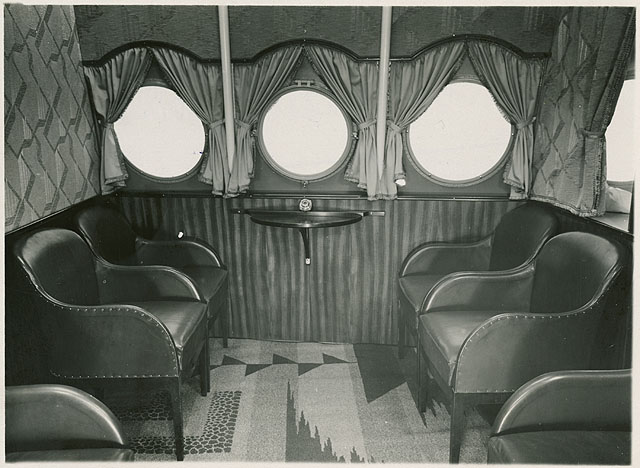Mind if I Smoke?
Remember when passengers used to toss lit cigarettes out the airplane window? No, really!
/https://tf-cmsv2-smithsonianmag-media.s3.amazonaws.com/filer/7d/63/7d630d8b-774f-4e81-a451-9f00a48b08a2/klm.jpg)
It’s hard to imagine now, but in the 1930s, during the days of luxury air travel, some airlines provided complimentary in-flight cigarettes. Some 40 years later, smokers would become the “new official pariahs,” groused the New Republic, while pointing out that smokers were already “segregated at the back of the plane, where they can cough and wheeze and die slowly among their own kind.”
But smoking was also banned in the early days of air travel. “Carriers had forbidden smoking aboard the earliest airliners,” writes Daniel L. Rust, assistant director of the Center for Transportation Studies at the University of Missouri-St. Louis, in his book Flying Across America: The Airline Passenger Experience. Early aircraft—made from wood, canvas, and dope—were highly flammable. It wasn’t until the advent of metal aircraft and enclosed cabins that the rules changed. “Airlines preferred smokers to light up in the forward section of enclosed cabin airliners such as Ford Tri-Motors,” writes Rust. “When windows in the rear and front areas of the cabin were open slightly, cabin air moved from back to front, pulling cigarette smoke from the cabin’s anterior into the airplane’s slipstream outside.”
Cigarettes burned more slowly at high altitudes, and smoking passengers complained that their cigarettes tasted different. There were other considerations as well: “As in-flight smoking became more popular,” says Rust, “the practice of tossing lit cigarettes out of aircraft windows became troublesome. The U.S. Department of Agriculture declared that smoldering cigarettes…dropped from aircraft posed a significant threat to America’s wilderness areas.”
Complimentary cigars were given to passengers by United Air Lines on its popular men-only service, called the New York Executive, says Rust: “A printed list of house rules advised passengers to relax, kick off their shoes, slip off their suit coats and ties, take out their pipes and complimentary cigars, and enjoy the ride in an environment free of female passengers.”
By the 1950s, smoking on airliners began to fall out of favor. One reason was an increase in food service (some passengers felt their extravagant meals were compromised by cigarette smoke). And physicians began warning their patients of the dangers of smoking in flight. In 1969, consumer advocate Ralph Nader filed a petition with the Transportation Department demanding a complete ban on smoking, and bills were quickly introduced in Congress calling for smoking and non-smoking sections aboard U.S. airliners.
In 1971, United Air Lines—one of the first airlines to offer complimentary cigarettes to its passengers in the 1930s—began to segregate cabins into smoking and non-smoking sections.
In 1996, the federal government banned smoking on all flights to and from the United States.
